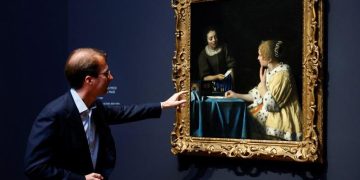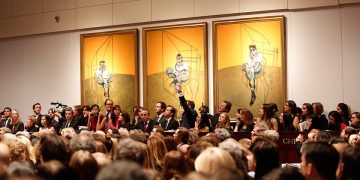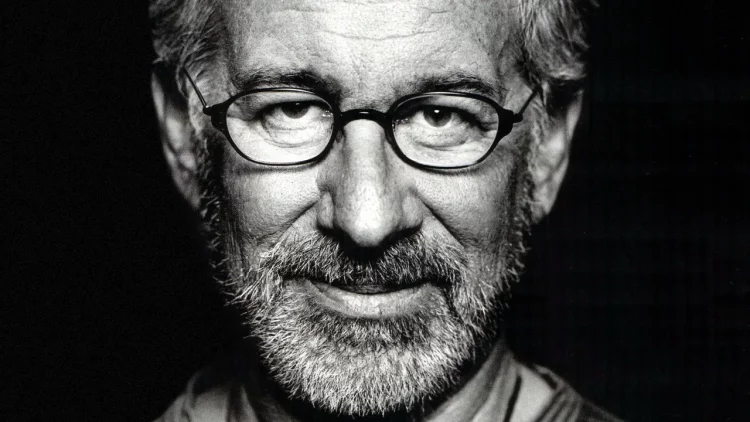Steven Spielberg, one of the most influential filmmakers in the history of cinema, has not only left an indelible mark on the film industry through iconic works like Jaws, E.T. the Extra-Terrestrial, Schindler’s List, and Jurassic Park, but he has also amassed a remarkable collection of movie memorabilia. This collection, which spans decades of cinematic history, is not just a treasure trove of pop culture artifacts but also a reflection of Spielberg’s deep emotional connection to the art of filmmaking and the cultural impact of cinema. The Spielberg collection, both in terms of the objects it contains and the history they represent, has sparked the imaginations of a new generation of collectors, igniting a unique blend of nostalgia, artistic appreciation, and historical reverence.
But what is it about Spielberg’s collection that appeals to the new generation of collectors, and why does it continue to hold such profound cultural and historical significance? Let’s delve deeper into the emotional connection, the historical value, and the powerful influence Spielberg’s collection has on today’s collectors.
1. The Emotional Connection: Spielberg’s Personal Relationship with His Films
Spielberg’s collection isn’t just a series of objects; it’s an extension of his personal journey as a filmmaker. From the iconic, life-sized Jaws shark model to the famous Indiana Jones fedora, every item in his collection tells a story, not only about the movie it comes from but also about the passion and vision that went into creating that movie.
Spielberg’s affection for these artifacts isn’t just about their monetary or historical value; it’s deeply emotional. For instance, his acquisition of the E.T. the Extra-Terrestrial animatronic puppet—a tangible piece of one of the most beloved family films of all time—carries with it decades of memory, innovation, and personal investment in the film’s creation.
For collectors, especially younger ones who might not have grown up in Spielberg’s era, these artifacts represent something more than just objects from a film. They symbolize a dream—one that Spielberg himself has nurtured over the years. The sense of nostalgia, paired with the understanding that these items were once integral to bringing unforgettable cinematic moments to life, creates an emotional connection that attracts both seasoned collectors and new enthusiasts alike.
2. The Cultural and Historical Value of Spielberg’s Collection
While Spielberg’s collection has a deep emotional resonance, it also possesses undeniable cultural and historical significance. As the man behind some of Hollywood’s most iconic films, Spielberg’s work has had a profound impact on not only the film industry but also global popular culture. His films redefined genres, shaped cinematic trends, and influenced generations of filmmakers.
By collecting pieces from these films, Spielberg has preserved part of the history of cinema—moments of groundbreaking visual storytelling, innovations in special effects, and performances that have changed how stories are told on screen. Take, for example, the famous Jurassic Park T. rex skull model or the Star Wars lightsaber, which were integral to the success of their respective films. These items represent milestones in film technology and storytelling, capturing the spirit of their era.
As the global film industry continues to evolve, the historical value of these artifacts only grows. They serve as time capsules, encapsulating key moments in the cultural evolution of film. For new collectors, the desire to own a piece of this history—whether it’s a prop, a costume, or a script—is driven not just by nostalgia but by the desire to own a piece of the storytelling revolution that Spielberg and his peers spearheaded. These objects are irreplaceable relics that document the artistic and technical breakthroughs of some of the most influential films of the last century.
3. Nostalgia and Pop Culture Fandom: The Allure of Iconic Film Memorabilia
The 21st century has seen a resurgence in the appreciation for pop culture and nostalgia. For many, Spielberg’s films represent the pinnacle of childhood memories, of growing up with classics like E.T., Back to the Future, and Jaws. These films are embedded in the cultural consciousness, and owning a piece of their legacy provides a direct connection to a beloved era of cinematic history.
For younger generations, this type of memorabilia serves as a way to engage with the cultural legacy of cinema in a tangible way. It allows collectors to immerse themselves in the world of their favorite films, offering a sense of continuity and connection to the past. Spielberg’s collection speaks to this desire, providing a physical manifestation of those cherished memories.
Collectors aren’t just seeking out artifacts from Indiana Jones or Jaws because of their monetary value; they are often driven by a deep sense of nostalgia, wanting to own a piece of something that shaped their childhood or shaped the childhood of those before them. The desire to connect with the cultural icons of their time drives younger collectors to seek out the very same items that made Spielberg’s films iconic in the first place.
4. Spielberg’s Influence on Filmmaking: How Collectors See His Legacy
Beyond his status as a director, Spielberg’s influence as a cultural architect extends to the world of collecting itself. The memorabilia he has collected often represents the essence of groundbreaking cinematic achievements, which have defined modern filmmaking. As one of the pioneers of the blockbuster genre, Spielberg’s impact on Hollywood is immeasurable.
This influence doesn’t just exist in the films themselves but also in the production processes that made them possible. Items like the Jaws shark model or the Close Encounters of the Third Kind special effects props were not just artifacts; they were the product of groundbreaking work in practical effects, CGI, and storytelling techniques that have since become industry standards. The memorabilia from Spielberg’s films is revered by new collectors because these objects represent not only iconic films but also innovations that reshaped the cinematic landscape.
For young filmmakers and film enthusiasts, acquiring pieces from Spielberg’s collection serves as a form of homage to the man who revolutionized the art of storytelling. For them, these objects are not just collectibles—they are symbols of excellence and innovation, embodying the spirit of an era where film was pushed to new creative and technological heights.

5. The Investment Aspect: Why Spielberg’s Collection Has Mass Appeal
While the emotional, cultural, and historical aspects of Spielberg’s collection are paramount, there’s also the financial consideration that comes with acquiring pieces of such importance. Spielberg’s memorabilia has proven time and again to appreciate in value, making it not only a collectible but also an investment. Auction houses, like Christie’s and Sotheby’s, have sold significant items from Spielberg’s collection for staggering amounts.
For example, in 2020, a collection of Spielberg’s Indiana Jones props, including the iconic fedora, fetched millions at auction. This was not just a reflection of the nostalgia associated with the films but also the growing trend of movie memorabilia as an investment class. The increasing recognition of the potential value of rare film artifacts has made Spielberg’s collection an attractive prospect for investors.
However, beyond pure financial considerations, the appeal lies in the fact that these objects have intrinsic cultural value. When collectors invest in Spielberg’s items, they are not only gaining a rare asset but also preserving the history and legacy of one of the most influential filmmakers in the world. This combination of financial opportunity and cultural significance makes Spielberg’s collection highly appealing to both seasoned and new collectors.
6. The Legacy of Spielberg’s Collection: How It Shapes Future Collecting Trends
Spielberg’s collection is more than just a reflection of his own cinematic legacy; it has also shaped the way we view film memorabilia and how it is collected. His vast collection of props, costumes, scripts, and original artwork highlights the growing appreciation for not just movie stars or directors but the very artifacts that bring stories to life. His approach to collecting has inspired a new wave of collectors to look at film memorabilia not just as an investment but as a meaningful connection to the history of the art form.
The attention Spielberg’s collection has garnered—especially among younger collectors—has cemented the idea that movie memorabilia is a valuable cultural artifact in its own right. This has led to a boom in collecting, with auction houses reporting record prices for objects from iconic films. Spielberg’s collection has helped turn movie memorabilia into a respected and coveted asset that will likely continue to grow in importance for generations to come.
Conclusion: Spielberg’s Collection as a Bridge Between Generations
Steven Spielberg’s movie memorabilia collection is a fusion of passion, history, and cultural influence. His deep emotional connection to the films, the cultural significance of the objects he has amassed, and the historical importance of the items he’s preserved have created a legacy that resonates with both veteran collectors and the new generation of film enthusiasts.
For younger collectors, Spielberg’s collection represents a bridge between generations, allowing them to connect with the cultural icons that shaped their childhood, while also offering a tangible way to engage with cinematic history. As these artifacts continue to appreciate in value and significance, Spielberg’s collection will remain a beacon for future collectors, film lovers, and investors alike. It’s not just about owning pieces of film history—it’s about connecting with the stories that have shaped and continue to shape our cultural landscape.

















































